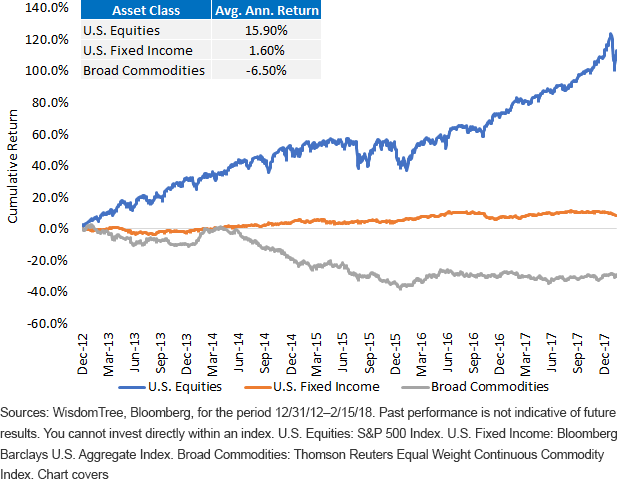Do Commodities Have a Place in a Portfolio?
This is an interesting question in today’s environment. Those of us who have read various finance textbooks that include sections on the benefits of things like “asset allocation” and “diversification” would, almost without thinking, say “yes.”
But if we look at the reality of what market participants have experienced in the past five years, we then recognize that, behaviorally, what has been practiced may look quite different.
U.S. Equities Delivered Very Strong Returns, while Broad Commodities Ran into the Wind

What those with exposure to commodities have seen in the past five years has been a money-losing proposition, while their U.S. equity portfolios have had stellar returns.
Shifting Drivers of Commodity Strategy Returns
Taking a step back, it is first important to understand what factors have caused such horrible returns in commodities, because either these drivers remain powerful headwinds (and returns suffer) or they are about to shift (leading to better returns to come).
1. Collateral: In commodity strategies that utilize futures contracts to generate their commodity exposure, one component of their returns comes from the exposure of the collateral for those contracts, typically short-term Treasuries. The U.S. Federal Reserve (Fed) has embarked on a path of raising its policy rate, thereby raising collateral returns for commodity strategies from near-zero levels.















Leave A Comment